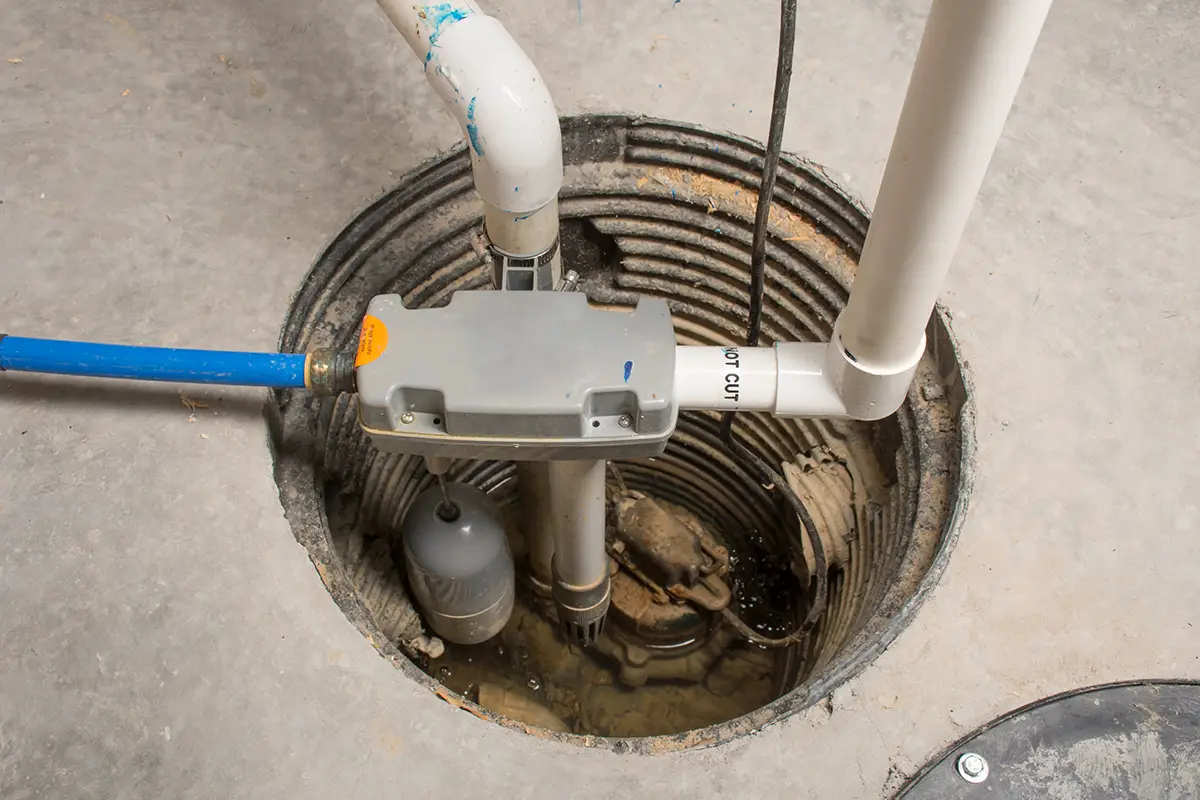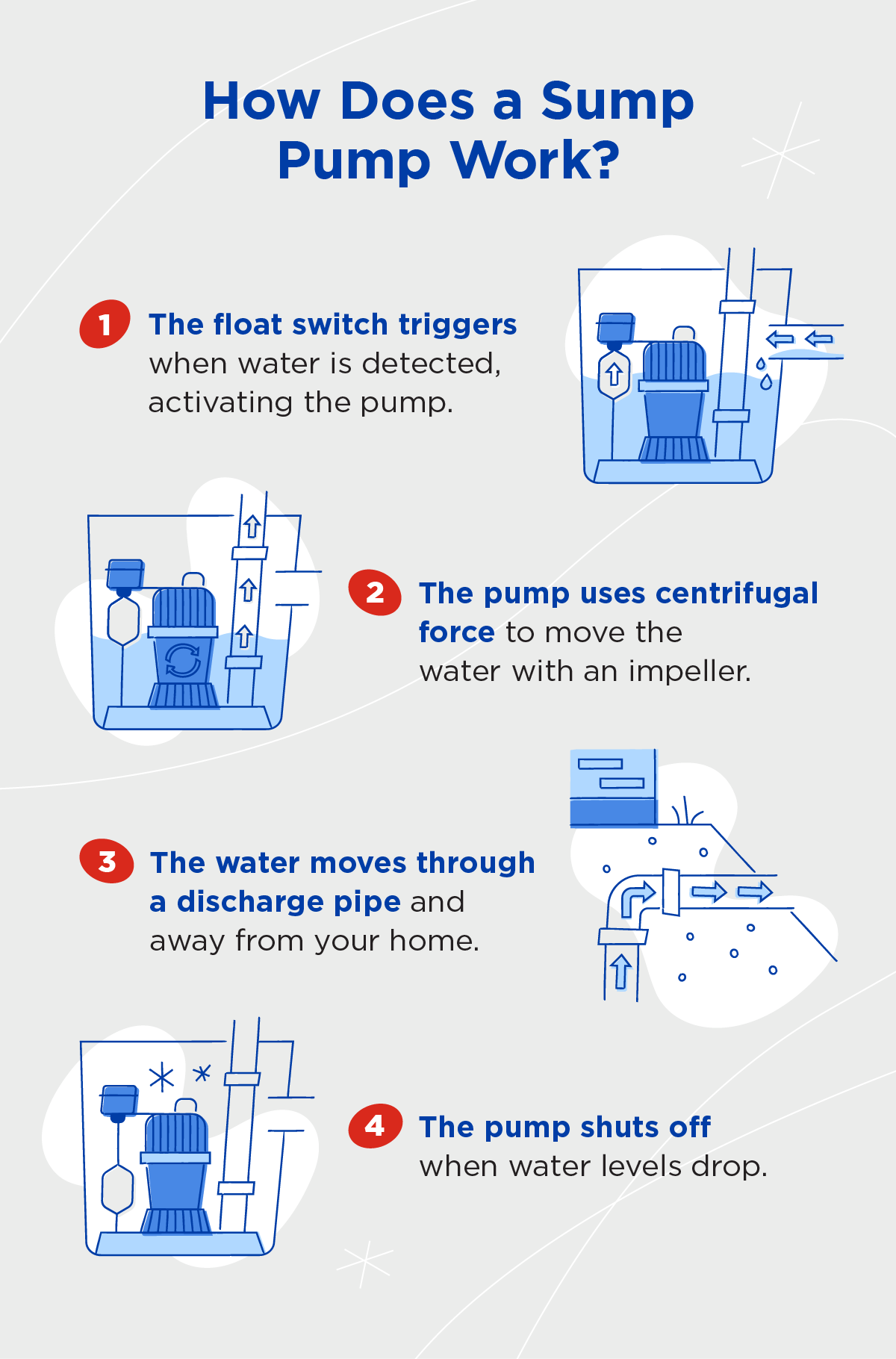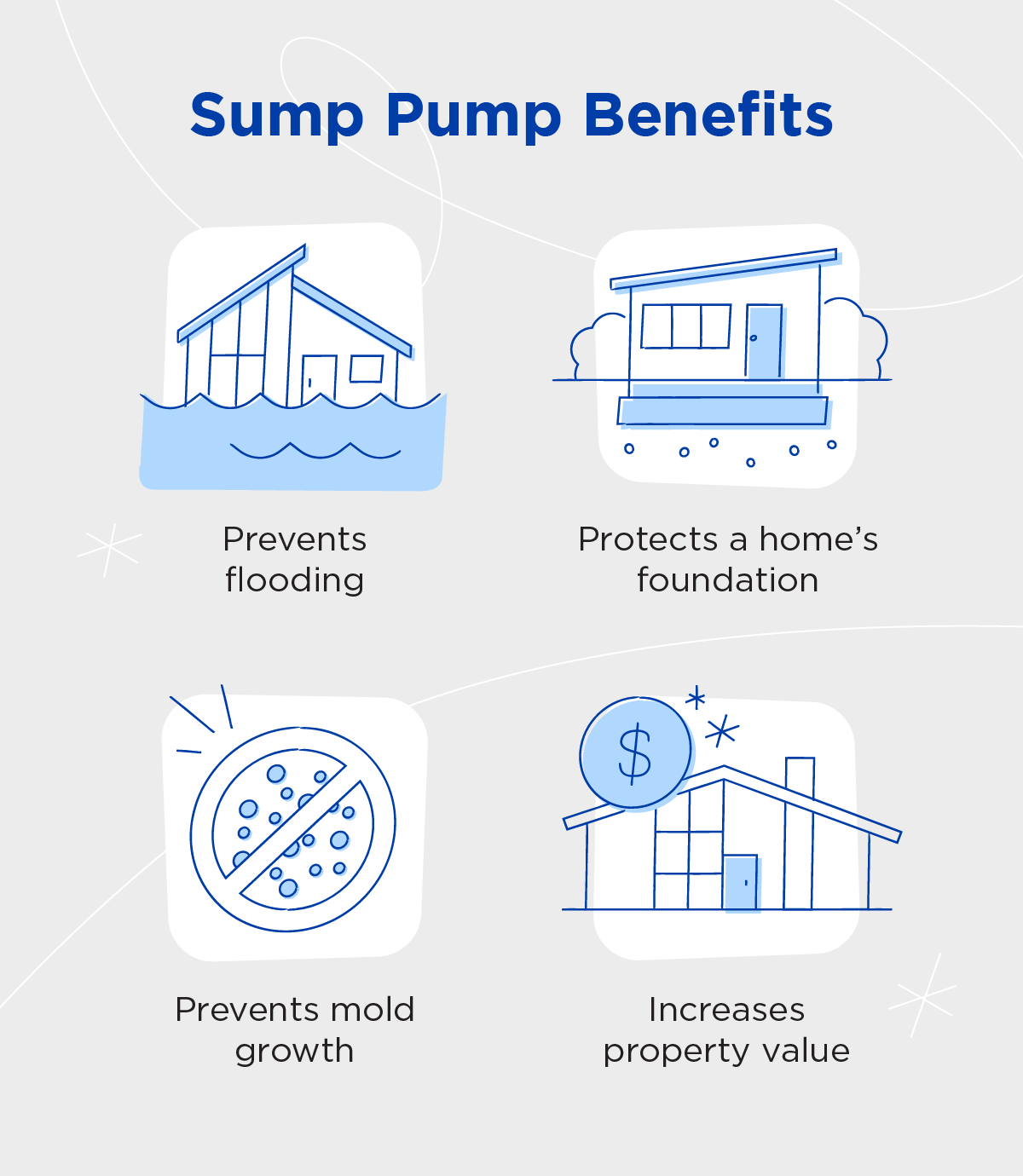
Mr. Rooter Plumbing explains how a sump pump can help prevent basement flooding by removing excess water.
|
What Does a Sump Pump Do?
It’s only natural to ask, ‘What does a sump pump do?’ when you rarely see yours in action. However, you’ll soon know their vital role when a storm hits.
During bad weather, the ground around your home can become saturated with water pooling underneath the foundation. Without a sump pump, this water accumulation can slowly seep through cracks in your foundation, eventually leading to a flooded basement.
Sump pumps prevent flooding by safely moving the water collected in the sump pit away from your home through a discharge pipe. It’s located in a sump pit, usually placed in the lowest point of a house, like a basement or crawl space.
Imagine a heavy storm hitting your area, causing potential flooding that could lead to other problems. With a sump pump, that excess water is pumped away from your house, protecting your belongings and the structural integrity of your property.
You may now know what a sump pump is and what it does, but you may not yet have the answers to this all-important question: How does a sump pump work?
Sump pumps automatically turn on when the water is detected in the sump pit. Here’s how a sump pump works to direct water away from your home:
- Activation: A sump pump has a float switch that is activated by detecting rising water levels. When the water collected in the pit reaches a certain level, it triggers the switch and activates the pump.
- Pumping process: Once the motor is activated, the pump moves the water with an impeller. Using centrifugal force, the impeller pushes the water into a discharge pipe.
- Discharge: The water travels away from your home through a discharge pipe and is released into a catch basin, dry well, or other outdoor drain. The designated drainage area should be about 10 to 20 feet from your home, ensuring the pumped-out water doesn’t seep back toward the foundation.
- Shut-off: When the water levels drop, the sump pump will turn off and remain on standby until it detects water again.
Benefits of a Sump Pump
Sump pumps help safeguard your home and prevent water damage that could lead to other issues. Here are some benefits of having a sump pump in your home:
- Prevents flooding: Flood prevention is the number one benefit of sump pumps. Flooding can lead to more serious problems, like structural damage, electrical damage, mold growth, and plumbing problems.
- Protects a home’s foundation: By removing excess water and keeping your basement dry, sump pumps prevent water from damaging your home, ultimately protecting the integrity and security of your home’s foundation.
- Prevents mold growth: A sump pump for home use prevents water and moisture from entering your basement, decreasing the likelihood of water damage that could lead to mold and mildew.
- Increases property value: A well-kept sump pump is a highly sought-after feature for prospective home buyers, as it offers prevention against potential flooding and other issues like mold, corrosion, and foundation damage.

4 Types of Sump Pumps
To ensure optimal protection against flooding, installing both a primary and backup sump pump at home is recommended. The most common types of sump pumps for home and business use include:
1. Submersible sump pump
A submersible sump pump is the most common type. With these sump pumps, both the motor and the pump sit inside the pit, submerging in water as the pit fills up. Submersible sump pumps are more powerful than other sump pumps. Because of this, they can pump a greater amount of water and can even pump debris that may have found its way into the sump pit.
Since these sump pumps operate underwater, they are much quieter and are less likely to overheat since water cools the motor. These systems are bigger than pedestal pumps, so they require a large pit to ensure proper functioning.
2. Pedestal sump pump
A pedestal sump pump is an above-water device, meaning the motor sits above the sump pit. The motor is mounted on a pedestal above the pit, while the pump is located at the bottom of the pit. Pedestal sump pumps are more narrow, making them ideal for homes that don’t have room for a large pit.
Since the motor is located above the pit and isn’t submerged in water, these types of pumps are noisier and more susceptible to overheating. Pedestal sump pumps also aren’t as powerful as submersible pumps, so they’re more prone to clogs.
3. Battery backup sump pump
Primary sump pumps can fail due to overheating, mechanical issues like a broken switch, clogs in the system, or even power outages. Installing a backup sump pump prevents water from entering your basement should your primary pump fail. Located right next to your primary pump, a backup sump pump automatically takes over if the main one stops working.
The most common type of backup sump pump is a battery-operated pump. Depending on the strength of the battery, these backup pumps can be pretty powerful and push out a high capacity of water.
However, since they run on battery power, they may run for a shorter time than water-powered pumps. These types of devices also require more maintenance since their batteries will need to be replaced every few years.
4. Water-powered backup sump pump
Water-powered backup sump pumps are connected directly to your main water supply line and rely on water pressure to operate. This means they can run continuously so long as there is water to trigger the system.
Similar to submersible sump pumps, a float switch triggers and opens a valve that extracts the water and moves it through a discharge pipe. It moves water by using the high water pressure from the water line to create a vacuum effect that sucks the water out of the sump pit and away from your home. Since these types of pumps need to connect to your main water supply line, they require professional installation.
Do You Need a Sump Pump?
If you don’t already have a sump pump at home, you may want to consider installing one if:
- Your home is prone to flooding: If your home is in an area that frequently has heavy rainfall and flood warnings, a sump pump is ideal to prevent water damage and other issues caused by flooding.
- You have a basement: Because basements are located at the lowest point of a home, it makes it easier for water to get in. If you have a basement and don’t already have a sump pump, consider installing one to protect your basement and your home’s foundation.
- You live in a wet climate: Damp basements are a breeding ground for mold. If you live in a damp environment, sump pumps can help control moisture levels and reduce the risk of mold growth.
- Your home has had previous water damage: If you’ve experienced flooding or have had water leaks in your home, a sump pump will help prevent future flooding risks that can lead to further water damage.
Install or Repair a Sump Pump With Mr. Rooter Plumbing®
If you live in an area with heavy rainfall or prone to floods, consider installing a sump pump to help protect the integrity of your home. Mr. Rooter Plumbing® has a team of service professionals with more than 45 years of experience who can help install a primary or backup sump pump, giving you peace of mind during heavy storm seasons.
Give us a call or schedule an appointment online for help installing a sump pump or if you have other questions regarding your home’s plumbing system.

